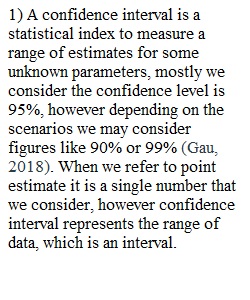


Q Please answer each/all of the following five (5) questions (2 points each, 10 points total): 1. What is a confidence interval? Explain how this relates to a point estimate. What two factors affect the size of a confidence interval, and how do they affect its size? 2. How do you determine what size confidence interval to use? When do you make this determination, and what is the trade-off between confidence and precision in the context of the confidence interval? 3. What are the two potential reasons why a sample statistic may not equal a population parameter? Provide a hypothetical criminal justice example. 4. Discuss the null and alternative hypotheses. Why is the null hypothesis being true considered by default? How do we know if the alternative hypothesis is actually true? 5. What is meant by Type I and Type II Error? What is the nature of the relationship between these two types of error?
View Related Questions